1. The Electric Bath
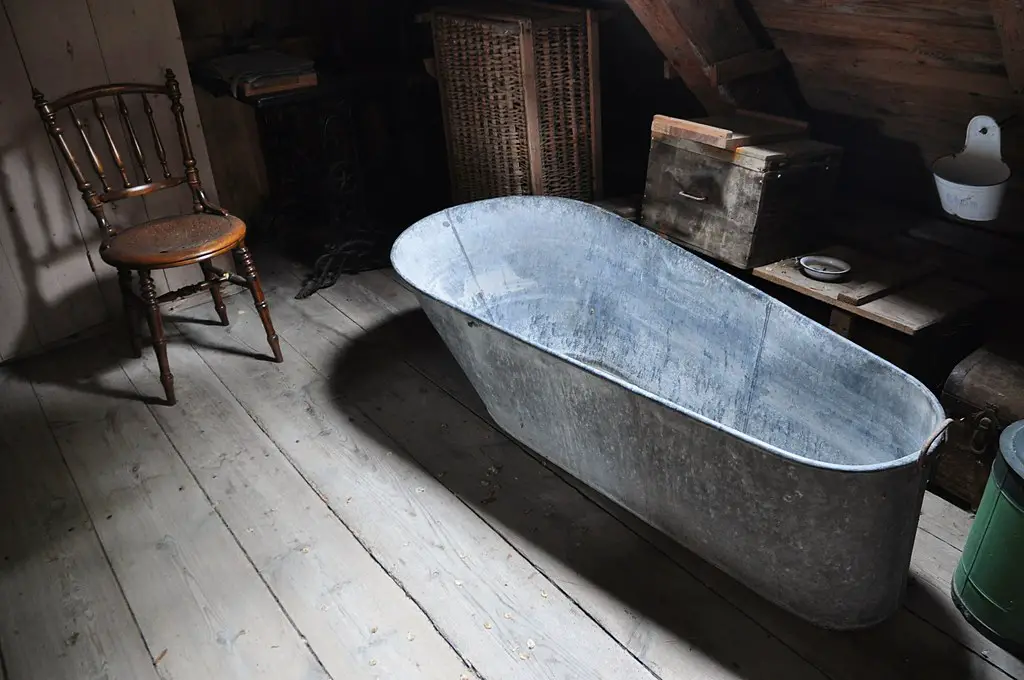
Imagine climbing into a cabinet that looks like a giant toaster, and instead of heat, it’s buzzing with electricity. The electric bath was marketed as a cure-all in the early 1900s, claiming to fix everything from depression to circulation problems. Patients sat inside with their heads sticking out, while mild currents ran through their bodies. It was supposed to “recharge” the nervous system.
In reality, most people just got a tingling sensation, and sometimes burns if the settings were too high. Doctors promoted it as cutting-edge science, though it looked more like a punishment chamber. While it’s not around today, you can still find ads describing it as a miracle therapy. Looking back, it’s hard not to wince at how willing people were to climb inside something that resembled a torture box.
2. The Hemorrhoid Clamp
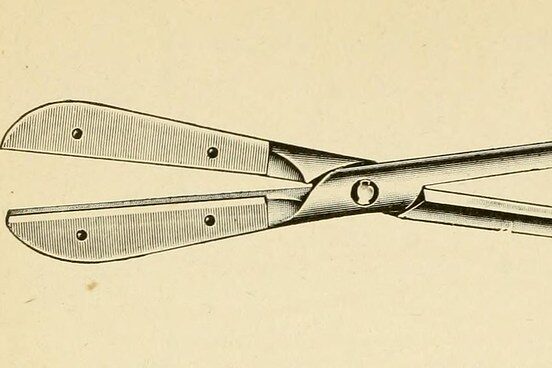
Yes, this was a real thing. The hemorrhoid clamp looked like a cruel metal pincer, and its purpose was to cut off circulation to swollen veins until they shriveled and fell off. Patients would lie back while a doctor snapped this clamp into place with no anesthetic.
The idea was simple but excruciating. It caused incredible pain and sometimes serious infections, since sterilization standards weren’t always top-notch. While hemorrhoid treatment has come a long way, the image of this clamp makes you wonder how desperate patients must have been to agree to such a procedure. It’s proof that “quick fixes” back then often came with a heavy dose of suffering.
3. The Iron Lung
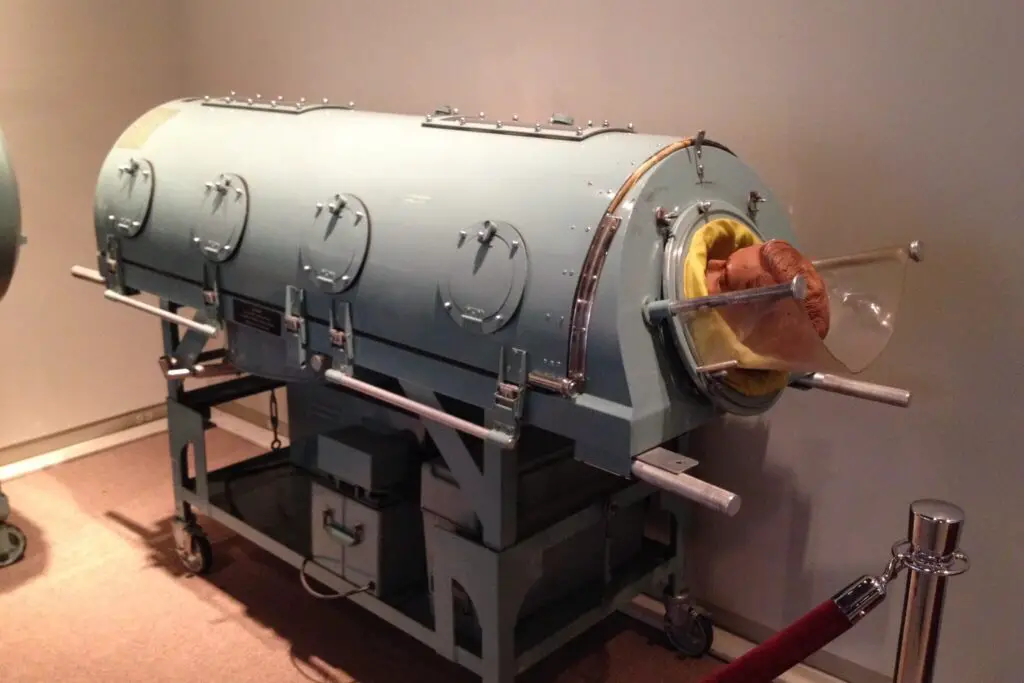
The iron lung is probably the most famous medical device that looks more like a coffin than a treatment. Developed in the 1920s, it was used mainly for polio patients whose lungs were paralyzed. Patients were sealed inside a large metal chamber with only their heads sticking out.
A pump would create negative pressure to force their lungs to expand and contract. It saved lives, but living in one could mean years—or even decades—inside a steel box. Families often decorated the outside to make it feel less grim, but it was still a terrifying sight. Today, it’s remembered as both a miracle of survival and a haunting reminder of pre-vaccine days.
4. The Glass Leech Jar

Bloodletting never truly went away in the 1900s, it just got new gadgets. Doctors used glass jars with suction pumps to hold live leeches as they attached to patients. The jars magnified the sight of the wriggling creatures, making it both clinical and horrifying.
The belief was that leeches could “balance the humors” or draw out toxins. In practice, patients left with bite marks, infections, and sometimes blood loss. Leeches still exist in medicine today, but under sterile and very controlled circumstances. Back then, the glass leech jar looked more like something from a horror movie laboratory.
5. The Radium Water Jar
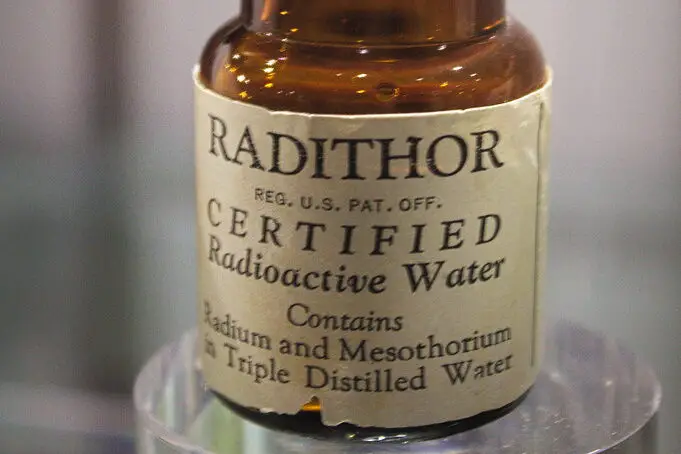
At the height of the radium craze, people genuinely believed radioactive water could restore health. Special ceramic jars infused with radium salts were sold to households. Families would pour water inside and let it sit overnight to become “energized.”
The result was radioactive drinking water marketed as a cure for arthritis, fatigue, and aging. Unfortunately, it also slowly poisoned users with radiation exposure. The jars themselves still set off Geiger counters today. It’s one of those chilling reminders that “miracle cures” often turned out to be silent killers.
6. The Pneumatic Vibrator
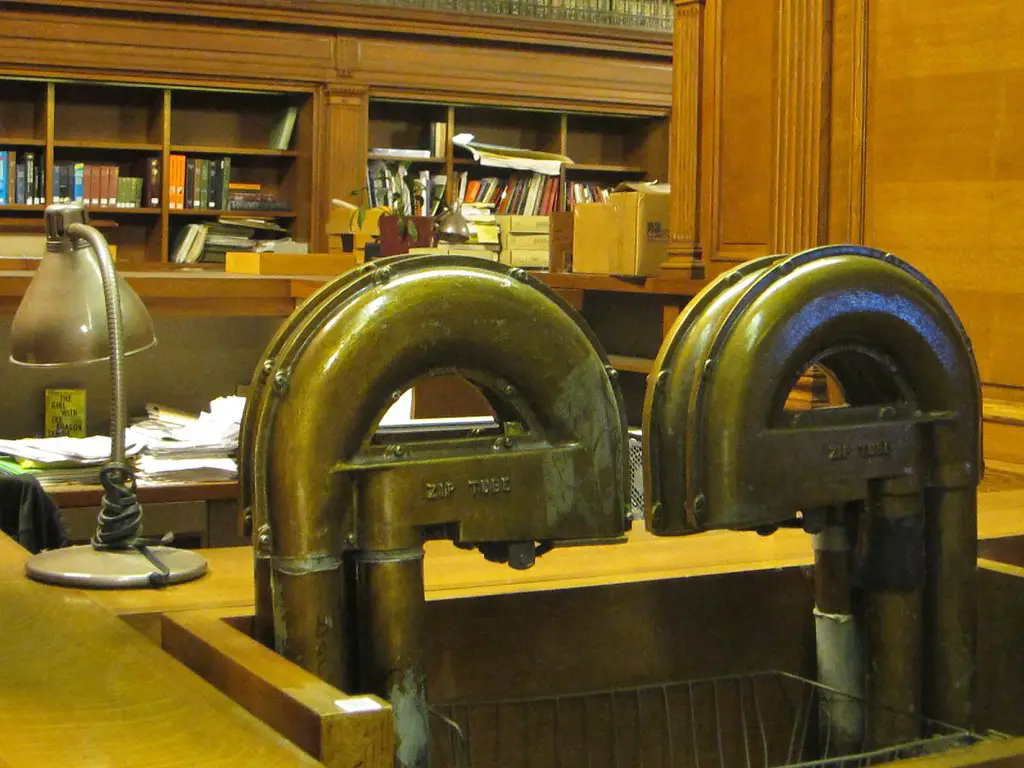
This device looked like a cross between a jackhammer and a medieval torture tool. Marketed as a treatment for “female hysteria,” it was used by doctors in the early 1900s to relieve supposed nervous tension. Patients would sit through sessions where the machine did its buzzing work.
What’s shocking now is that this was considered a legitimate medical treatment prescribed by professionals. Many women dreaded the visits, as the machines were loud, heavy, and uncomfortable. While modern society has a different understanding of female health, looking back, it’s hard not to cringe at the clinical coldness of such contraptions.
7. The Tonsil Guillotine
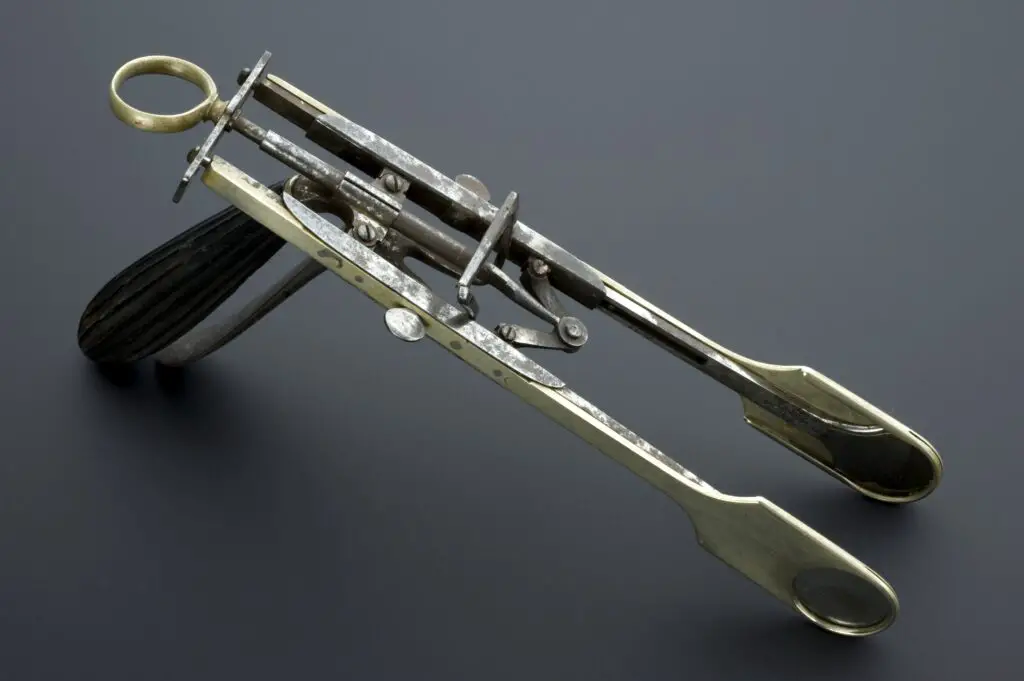
Just hearing the name is enough to make you flinch. The tonsil guillotine was a handheld device with a sharp blade designed to slice out tonsils in one swift motion. It was widely used in the early 20th century when tonsil removal was common, almost like a rite of childhood.
The problem was, it wasn’t always clean or accurate. Children often went through the procedure without proper anesthesia, leaving them traumatized. The device could slip, leading to bleeding and serious complications. Today’s tonsillectomies are much safer, but the image of a guillotine in your throat is enough to make anyone shudder.
8. The Electroconvulsive Therapy Machine

In the 1930s and 1940s, doctors began using electricity to treat mental illness. Patients were strapped down and jolted with strong currents to induce seizures. The machines had big knobs, wires, and clamps that looked more suited for an execution than a cure.
While ECT is still used today in carefully controlled doses, the early versions were brutal. Patients often experienced memory loss, broken bones from convulsions, and fear of returning for another session. The sight of those machines was enough to terrify anyone, even before the switch was flipped. It’s one of the most infamous examples of a device that straddled the line between treatment and torture.
9. The Plombage Therapy Chest Balls
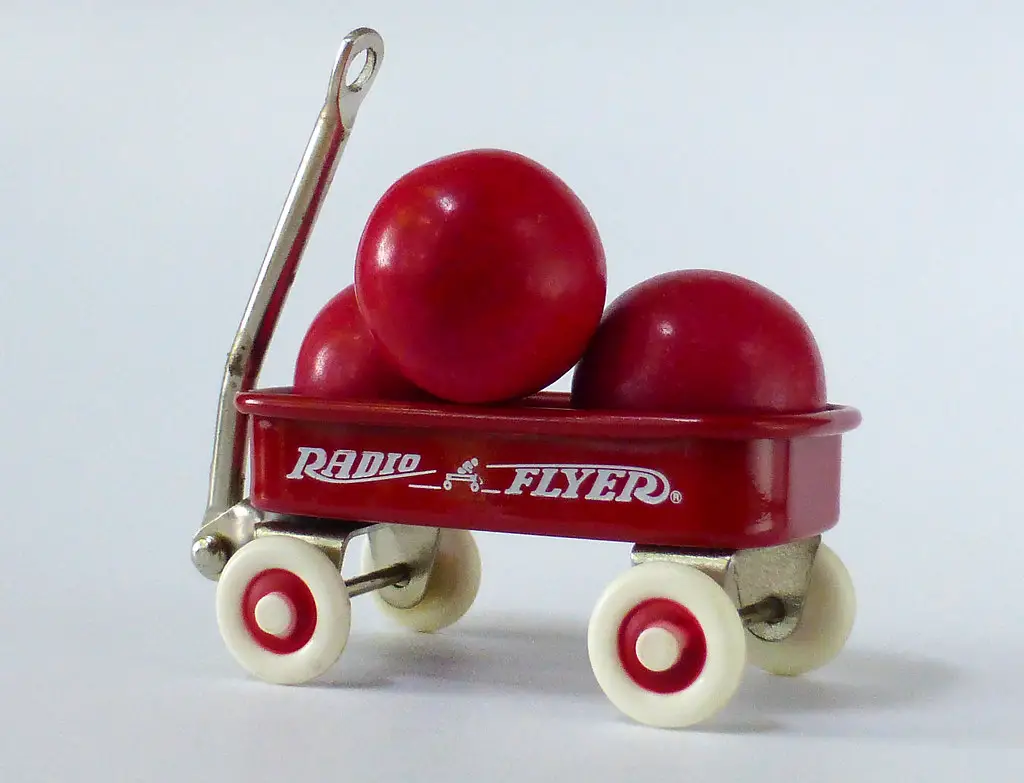
Tuberculosis treatment in the early 1900s was desperate and creative, sometimes horrifyingly so. One method called plombage involved inserting sterile rubber balls or even ping pong-like objects into the chest cavity. The idea was to collapse part of the lung and let it “rest.”
This required opening up the chest and packing it with foreign objects. Patients were left with long-term pain, infections, and the eerie knowledge that they had balls rattling around inside them. Though some did recover, it’s a chilling example of how far doctors were willing to go when faced with limited options. Today, it’s remembered more as a medical oddity than a real solution.
10. The Malaria Therapy Needle

Believe it or not, doctors once intentionally gave patients malaria. In the early 1900s, malaria therapy was used to treat syphilis, since the high fevers could kill the bacteria. Patients were injected with malaria-infected blood using large, intimidating needles.
The process sounds like something out of a nightmare. Patients endured cycles of violent fevers, sweating, and chills, all in hopes of surviving syphilis. While it sometimes worked, many didn’t survive the “cure.” Looking back, the idea of doctors deliberately infecting people with a deadly disease feels more like torture than treatment.
11. The Trench Mouth Irrigator
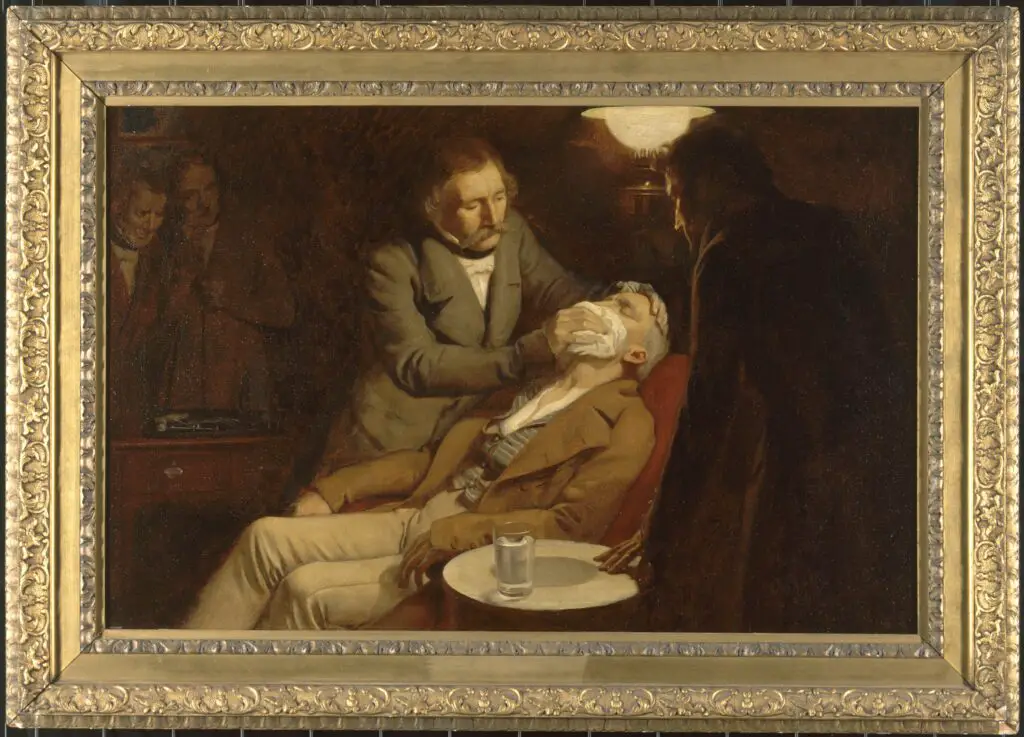
During World War I, soldiers developed “trench mouth,” a severe gum infection from poor hygiene and stress. One treatment involved a pressurized metal irrigator that blasted infected gums with antiseptic solutions. It looked like a dentist’s water gun crossed with a medieval syringe.
Patients described it as agonizing, as the pressurized liquid stung raw tissues. Doctors insisted it was necessary to stop the spread of infection, but many soldiers dreaded it more than the drills. While it did help in some cases, the harsh method added to the misery of wartime medicine. Just imagining the metallic taste and burning sensation is enough to make you squirm.
12. The Restraining Crib
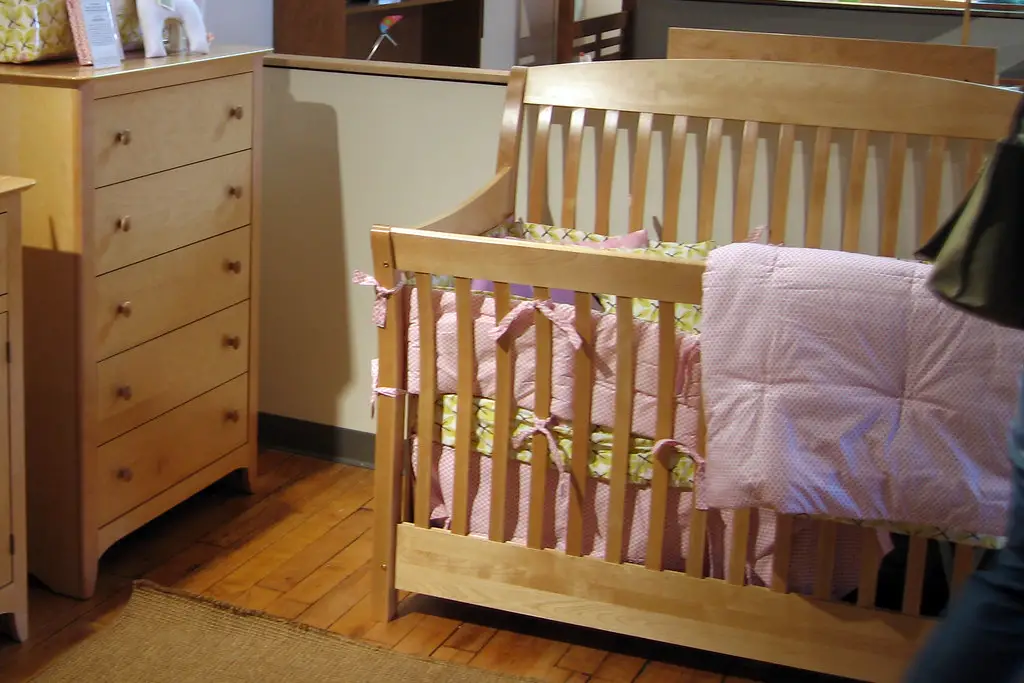
Mental asylums in the early 20th century often used restraining devices to “calm” patients. One of the most disturbing was the restraining crib—a coffin-like wooden bed with bars across the top. Patients were locked inside for hours or even days at a time.
The crib was supposed to prevent self-harm, but in practice, it functioned like solitary confinement. Patients often panicked, injured themselves trying to escape, or became more distressed. Seeing one today, it looks more like something from a dungeon than a hospital. It’s a stark reminder of how misunderstood mental illness once was.
13. The Mercury Inhaler
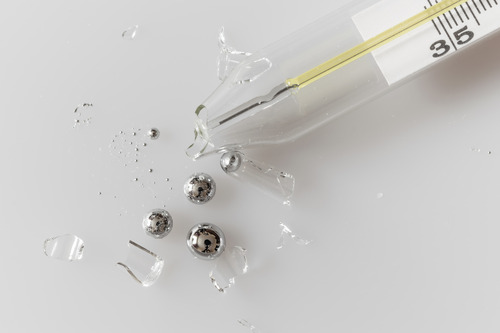
For years, mercury was believed to have healing properties. Doctors created inhalers that vaporized mercury compounds for patients to breathe in. These devices were glass or metal contraptions that looked harmless but delivered toxic fumes straight into the lungs.
Patients with ailments like asthma or tuberculosis were told this would clear their systems. Instead, they absorbed mercury into their bodies, leading to poisoning. Side effects included tremors, hallucinations, and neurological damage. What makes it even more unsettling is that it was sold as a home device, meaning families unknowingly poisoned themselves in their own living rooms.
14. The Radium Suppository
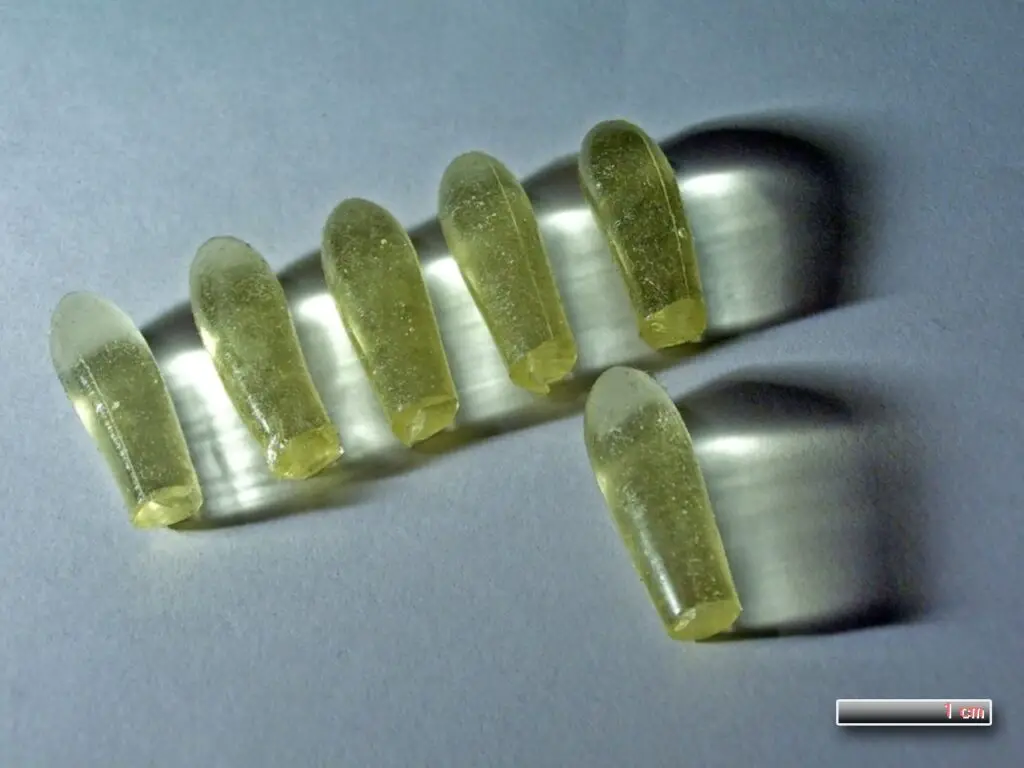
One of the strangest and most uncomfortable inventions was the radium suppository. Marketed to men in the early 1900s, it promised renewed energy, vigor, and even restored virility. The devices contained small amounts of radium and were inserted rectally for “direct absorption.”
It sounds almost too outrageous to be real, but these were actually sold in catalogs. The radioactive exposure slowly harmed users, sometimes fatally, while offering no real benefits. The packaging often used words like “rejuvenation” and “vitality,” but the reality was closer to torture. It’s a chilling example of how dangerous fads slipped into everyday medicine.
